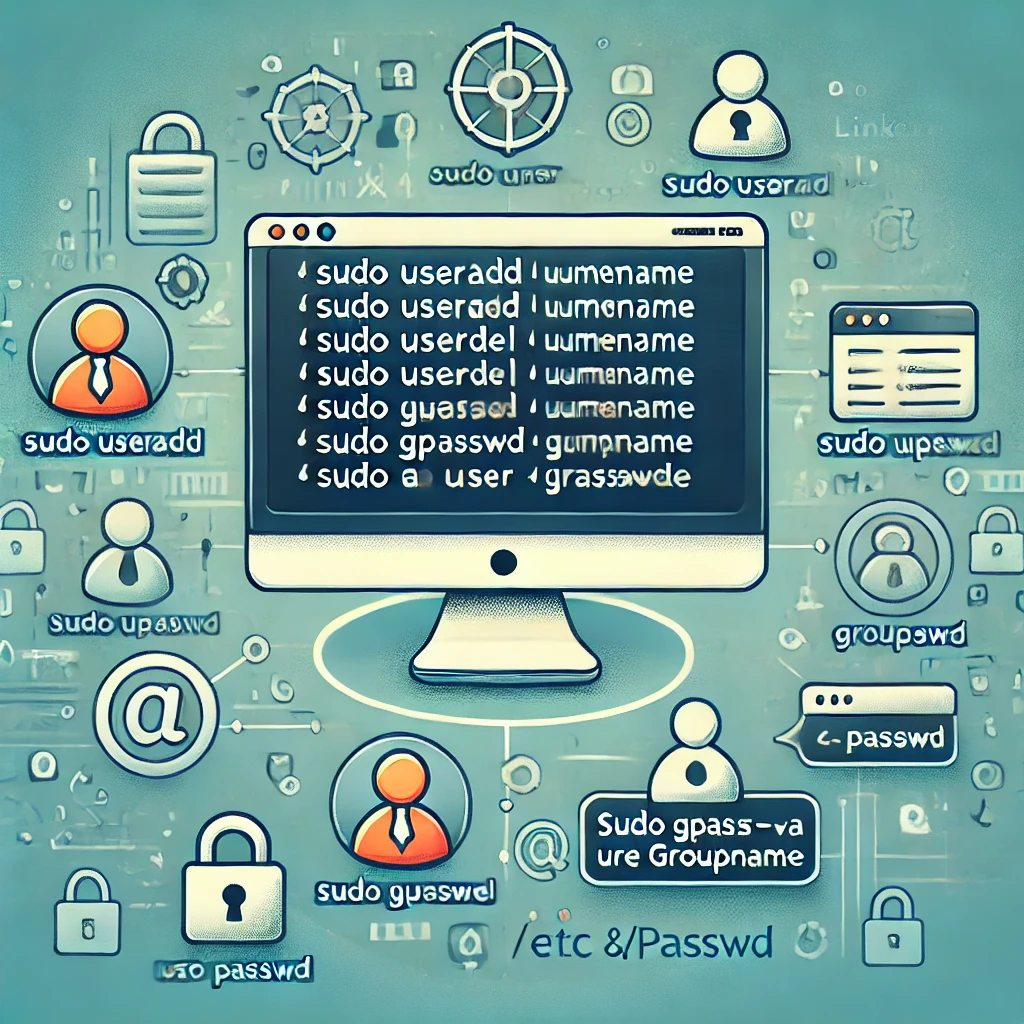Linux User & Group Management: Key Commands for Efficient Access Control
 sravani punreddy
sravani punreddyTable of contents
- 1. sudo Command:
- 2. useradd Command:
- 3. whoami Command:
- 4. passwd Command:
- 5. su Command (Switch User):
- 6. Exiting the User Session:
- 1. Adding a New Group: groupadd
- 2. Viewing Group Information: cat /etc/group
- 3.Adding a User to an Existing Group: usermod
- 4. Adding Multiple Users to a Group: gpasswd -M
- Summary

Effective user management is essential in Linux for maintaining system security and organization. This blog post explores essential user management commands, including their explanations and practical examples.
1. sudo Command:
sudo stands for "superuser do." It allows a permitted user to execute a command as the superuser (root) or another user as specified by the security policy. This is crucial for performing administrative tasks without logging in as the root user.
Command:
sudo apt-get update
This command updates the package list for the Advanced Package Tool (APT) in Debian-based distributions .
The whoami command displays the username of the current user. It is useful for verifying which account you are logged into, especially when executing commands with sudo.like Ubuntu. Running this command with sudo ensures that you have the necessary permissions to access the system’s package manager.
2. useradd Command:
The useradd command is used to create a new user account in the Linux system. It can be customized with various options for setting up the user's home directory, shell, and other attributes.

3. whoami Command:
The whoami command displays the username of the current user. It is useful for verifying which account you are logged into, especially when executing commands with sudo.

4. passwd Command:
The passwd command allows users to change their passwords or the passwords of other users when executed by the root user. This is a vital command for maintaining security in user accounts.

5. su Command (Switch User):
The su command stands for "substitute user" or "switch user." It allows you to switch from one user account to another. If used without options, it switches to the root user.

6. Exiting the User Session:
To exit a switched user session and return to the previous user, simply type exit.

In Linux, managing groups is a critical task for system administrators to streamline user permissions and organize access control. Here we explores several essential group management commands, explaining how to add groups, view group information, and assign multiple users to groups effectively:
1. Adding a New Group: groupadd
The groupadd command is used to create a new group in Linux. This is useful for categorizing users with shared access needs, such as developers or administrators.
Syntax:
sudo groupadd groupname
Example:

This command creates a new group named devteam, which can then be used to organize users who require similar access permissions.
2. Viewing Group Information: cat /etc/group
To list all groups on the system, you can view the /etc/group file, which contains information about each group, including the group name, Group ID (GID), and group members.
Command:
cat /etc/group
Explanation:
The /etc/group file is structured as follows:
group_name:x:GID:
For example, viewing this file after adding the devSecops group may look like:

3.Adding a User to an Existing Group: usermod
The usermod command with the -aG option allows you to add a user to a group without removing them from other groups. This is particularly useful when you need a user to have access to resources managed by multiple groups.
Syntax:
sudo usermod -aG groupname username

we ca see here use mokshi added to devsecops group.
4. Adding Multiple Users to a Group: gpasswd -M
When adding multiple users to a single group at once, the gpasswd command with the -M option is ideal. This command assigns a list of users to a specified group, replacing any existing group members if the group already has users.
Syntax:
sudo gpasswd -M username1,username2 groupname

In this example, user1 and user2 are added to the Tester group, if we add again on more user to tester group then it overrides

here we cann add all users at a time by giving all user names

or you can append by command


Summary
Managing groups is essential for organizing user permissions and ensuring smooth access control across a Linux system. By using commands like groupadd, cat /etc/group, usermod -aG, and gpasswd -M, administrators can efficiently manage group memberships and streamline permissions. This ensures users have the necessary access without compromising system security.
Do you use these commands often, or have any tips to share? Let us know in the comments!
Subscribe to my newsletter
Read articles from sravani punreddy directly inside your inbox. Subscribe to the newsletter, and don't miss out.
Written by
